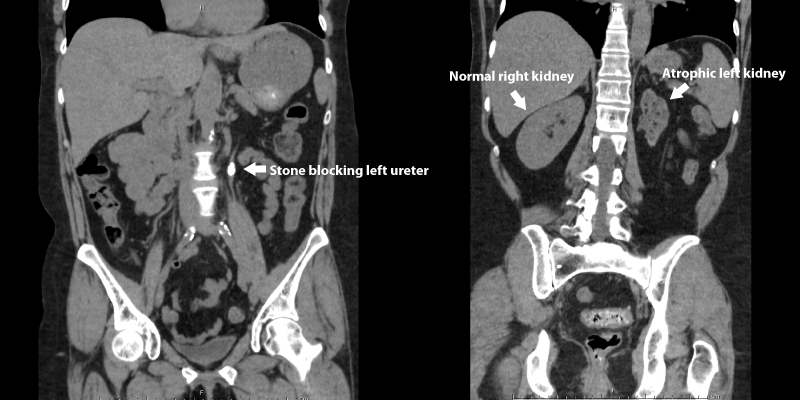In uro-surgery,urethroplasty is the repair of an injury or defect within the walls of the urethra. There are four commonly used types of urethroplasty performed; anastomotic, buccalmucosal onlay graft, scrotal or penile island flap (graft), and Johansen's urethroplasty.
The choice of procedure is dependent on factors including:
- physical condition of the patient
- overall condition of the remainder of the urethra (not affected by the stricture)
- the length of the defect (best determined by urethrography)
- multiple or misaligned strictures
- anatomical positioning of the defect with regard to the prostate gland, urinary sphincter, and ejaculatory duct.
- position of the most patent area of the urethral wall (necessary for determination of the location of the onlay/graft site, most often dorsal or ventral)
- complications and scarring from previous surgery(ies), stent explantation (if applicable), and the condition of the urethral wall
- availability of autograft tissue from the buccal cavity (buccal mucosa) (primary selection)
- availability of autograft tissue from the penis and scrotum (secondary selection)
- skill level and training of the surgeon performing the procedure
The length-of-stay is usually determined by the:
- status/condition of the patient, post recovery
- after-effects of the anesthesia/sedation/spinal anesthesia utilized during the procedure
- anticipated post-surgical care, per care plan (dressing changes, packing changes, and monitoring of (any) surgical drains - if used)
- monitoring of the newly established urethral cysostomy (Johansen's urethroplasty) if applicable
- monitoring of the supra pubic catheter or foley catheter for signs of infection and proper urine output if applicable
- titration of palliative and anti-spasmodic medication(s) if applicable
- post surgical complications if any
Ideally, the patient will have undergone urethrography to visualize the positioning and length of the defect. The normal pre-surgical testing/screening (per the policies of the admitting hospital, anesthesiologist, and urological surgeon) will be performed, and the patient will be advised to ingest nothing by mouth, NBM, for a predetermined period of time (usually 8 to 12 hours) prior to the appointed time.
Upon arrival to the preoperative admitting area, the patient will be instructed to don a surgical gown and be placed into a receiving bed, where monitoring of vital signs, initiation of a normal saline IV drip, and pre-surgical medication including i.v anti biotics, and a sedative.
The patient will be transported to the operating room and the procedures for induction of the type of anesthesia chosen by both the patient and medical staff will be started. The subject area will be prepped by shaving, application of an antiseptic wash (usually povidone iodine), surgically draped and placed in lithotomy position appropriate for surgery on OT table.
Constant monitoring of vital signs including pulse oxymetry are carried out by the anesthesia practitioner until the patient is discharged post-operatively to the post-surgical recovery unit. After sufficient awakening from the anesthetic agent has taken place, and if the patient is a candidate for same day discharge, he (and the person responsible for his transport home) will be instructed in the care and emptying of the catheter and its drainage system, cleansing of the involved area(s) and methods/intervals for dressing change, monitoring for signs of infection and for signs of catheter blockage. The patient will be given prescriptions for an antibiotic or anti-infective agent, and a mild to moderate pain medication (no more than a few days worth of pain is expected). The patient will be instructed to optimize bed rest for the first two days after the operation, be limited to absolutely no lifting, and instructed to consume a high fiber diet and use a stool softener to help in avoiding straining during evacuation. After days 1 and 2, the patient will be instructed to sensibly increase physical activity, and avoid becoming sedentary. Adequate hydration is essential during the post-recovery phase of the procedure.
In accordance with the preference of the surgeon, a retrograde urethrogram will be scheduled to coincide with the anticipated removal date of the suprapubic or Foley catheter (usually 7 to 14 days post-procedure, however some surgeons will attempt removal in 3 to 5 days).[16] At 10 days post procedure, the suture line(s) will be evaluated, and the sutures removed if applicable (in many cases, the surgeon will utilize absorbable sutures, which do not require removal)
Urethroplasty is generally well tolerated with a high rate of success, serious complications occur in fewer than ten percent of patients.
- recurrence of the stricture
- infection
- urinary incontinence (symptoms of incontinence often improve over time with strengthening exercises)
- urinary retention requiring intermittent catheterisation to completely empty the urinary bladder
- erectile dysfunction
- loss of penile sensation, decreased tactile sensation of the penile shaft and corona
- retrograde ejaculation, changes in ejaculation, and decrease in intensity of orgasm
- urinary fistula
- urinary urgency
- urine spraying
- hematoma











.jpg)


































.jpg)



